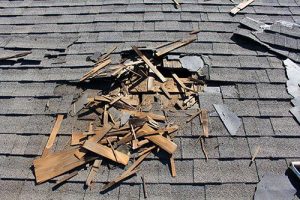 Most people don’t think about their roofs until they start leaking. Don’t wait until water is pouring through your ceiling to start paying attention to your roof. A little monitoring and preventative maintenance can go a long way.
Most people don’t think about their roofs until they start leaking. Don’t wait until water is pouring through your ceiling to start paying attention to your roof. A little monitoring and preventative maintenance can go a long way.
A good time to inspect your roof is during a rain storm. Go outside with binoculars and take a look at your roof and gutters. Pay attention to how the rain water is flowing off your roof and if it collects in any low spots. Make sure water is not coming down behind the gutters and that the gutters are properly sloped. Also, check your gutters for shingle granules. If your roof shingles are losing a lot of granules, that is a sign it is nearing the end of its expected useful life.
Then, on a nice sunny day, head up to your attic. Look for beams of sunlight coming through the roof and signs of moisture intrusion like stains and streaks.
Next, check the quality of your shingles. They should be laying flat against your roof. Cracked, cupped, and buckling shingles are all signs of required repairs.
The quality of flashing around your vents, skylights, and chimneys is very important as it seals the seams of the roof from rain and weather. Examine these points to make sure there are no cracks or breaks. In older homes, a common flashing material was roof cement or tar, but it’s a good idea to upgrade to metal flashing for added durability.
A droopy or sagging roof can be an indication of moisture intrusion. Check the surface for signs of trapped moisture and rotting boards, especially at the lowest points in the roof. Moss growing on the roof can also be an indicator of trapped moisture. Clean it up with a stiff brush and be sure to investigate further to determine if there are any underlying problems.
Was there recently a bad storm in your area? This is a good time to conduct a roof inspection as high winds and hale can all do damage to your roof, regardless of the roofing material.
Other common roofing materials include slate, metal sheeting, and wood. Slate roofs should be professionally inspected every few years. Missing, broken, and loose slate shingles should be repaired as soon as possible.
Metal roofs have a relatively long life, but other problems like damage to the underlying structure can often lead to premature repair or replacement. Popped nails and wind damage are common problems that require periodic maintenance. Cleaning and repainting of corrosion is also a way to extend the useful life of this roofing material.
Wood roofing can have a long life as well. However, if installed in a wet or shady environment, or if the pitch is too shallow, replacement may be needed more often. Maintenance of wood shingle roofs consists of rot control and fire resistance measures.
A few damaged shingles or a slight leak doesn’t necessarily mean you need a new roof. Call us today for a roof inspection! Our licensed, Professional Engineers are trained to evaluate, diagnose, and provide helpful opinions on how to proceed. Contact us today!
